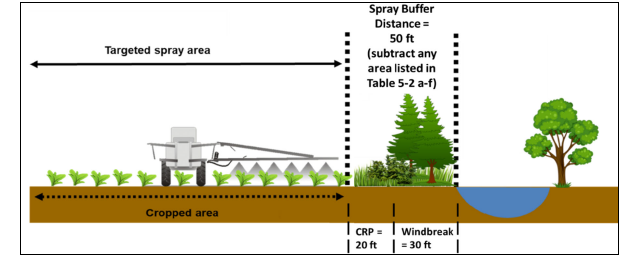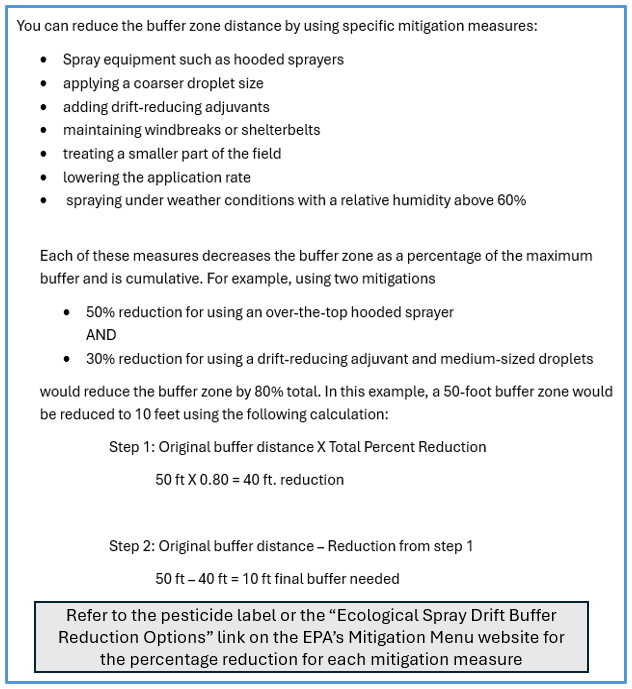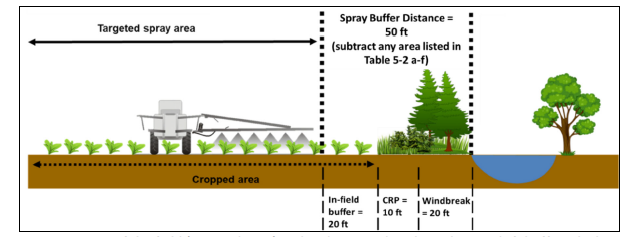***The EPA’s Pesticide App for Label Mitigations (PALM)–Spray drift calculator is a user-friendly mobile app that helps you understand and calculate the mitigations you can use to reduce the spray drift buffer zone distance. Click the link above to get started.***
Of the measures required to protect endangered species, drift management is the most straightforward—follow the label. Every agricultural pesticide label includes general use restrictions to prevent or control drift, such as “Do not apply when winds are gusty or when conditions will favor movement of spray particles off the desired spray target.” These restrictions are required across the entire use area of a pesticide.
When drift could impact listed species or their habitat, the pesticide label outlines additional required measures. These often include a downwind spray drift buffer zone, also known as a setback distance or no-spray zone, between the application area and a protected area located downwind. The buffer zone distance varies by application method: aerial application can range from 0 to 320 feet; ground boom from 0 to 310 feet; and airblast sprayers from 0 to 160 feet. Liberty Ultra (see page 9 of the label), for example, requires the applicator to maintain a buffer of 50 feet for aerial applications and 10 feet for ground applications, along with a specified droplet size distribution.
In some cases, using a single option can eliminate the need for a buffer. Again, from the Liberty Ultra label (see page 10 of the label), using specific spray equipment such as hooded sprayers, adding an oil emulsion reducing adjuvant that makes up 2.5% of the total volume of the finished spray tank mix, or maintaining windbreaks or shelterbelts can reduce the ground buffer distance to zero feet.
Some “managed land” areas located downwind of the treated field edges can be included in the buffer zone footage, or the buffer zone can be eliminated if the managed area occupies at least the length of the required buffer. Click here for a list of managed land examples. In the illustration below, the required 50-ft spray buffer distance is reduced to zero with the establishment of a 20-ft CRP strip and a 30-ft windbreak:
However, in the following example, the CRP strip and windbreak make up only 30 ft. of the 50-ft buffer, thereby requiring an in-field buffer of 20 ft:
Table 5-2 a-f mentioned in the illustrations is the list of managed land examples given earlier.
Click here for EPA’s Spray Drift and Runoff Mitigation Calculator (Excel) or use the Pesticide App for Label Mitigations described at the top of the page.
Buffers are not necessary for application methods that are not susceptible to spray drift. Examples include in-furrow sprays, tree trunk drenches, tree injections, soil injections, or small-area applications (< 1/10 acre or < 1,000 sq. ft.) (1 acre = 43,560 sq. ft., so 1/10th of an acre equals 4,356 sq. ft.). Chemigation with overhead and impact sprinklers does not require spray drift buffers, but other protective measures might be needed.

